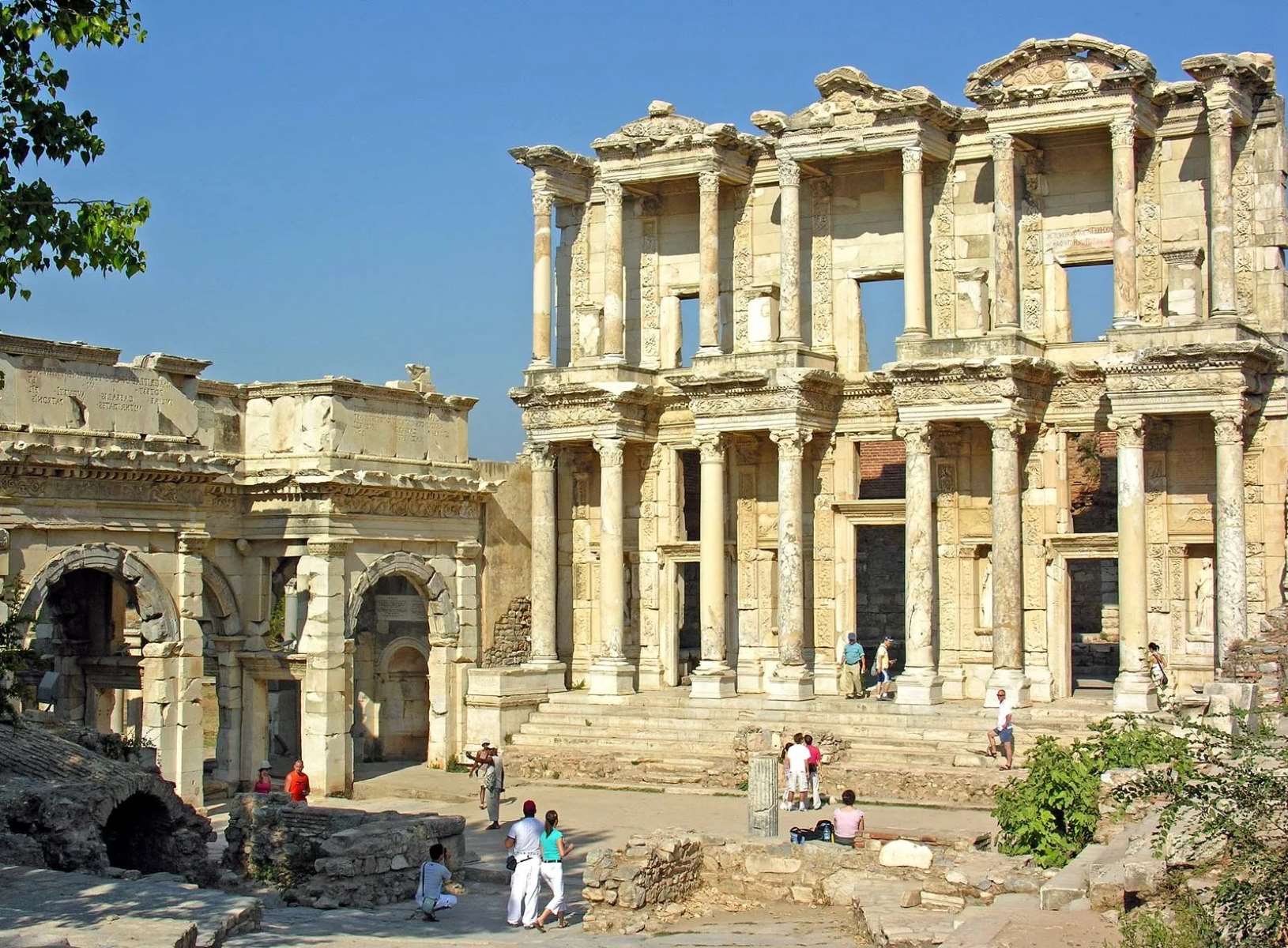Mysteries Of Turkey’s Ephesus Ancient City

Have you ever wondered what it would be like to walk through the streets of an ancient city? Ephesus in Turkey offers that chance. This ancient city, once a bustling hub of commerce and culture, now stands as a testament to the grandeur of the past. Imagine strolling through the same streets where merchants traded spices, philosophers debated ideas, and gladiators fought in grand arenas. From the majestic Library of Celsus to the awe-inspiring Temple of Artemis, one of the Seven Wonders of the Ancient World, Ephesus is a treasure trove of history waiting to be explored. Ready to step back in time?
Mysteries of Turkey's Ephesus Ancient City
Ephesus, an ancient city in Turkey, holds secrets and stories from thousands of years ago. Walking through its ruins feels like stepping back in time. Here are some of the most fascinating spots you must see.
The Library of Celsus
The Library of Celsus stands as a testament to the grandeur of Ephesus. Built in honor of Roman Senator Tiberius Julius Celsus Polemaeanus, this library once held thousands of scrolls.
- Facade: The impressive facade, with its towering columns and statues, is a marvel of ancient architecture.
- Reading Room: Imagine scholars of old poring over texts in the grand reading room.
- Underground Vault: Beneath the library lies a hidden vault where precious scrolls were stored.
The Great Theatre
The Great Theatre of Ephesus is a massive structure that could hold up to 25,000 spectators. It was used for drama performances and gladiatorial contests.
- Stage Building: The stage building, or skene, provided a backdrop for performances and housed dressing rooms.
- Seating Area: The semi-circular seating area offered excellent acoustics, allowing even those in the back to hear clearly.
- Tunnel Entrances: Hidden tunnels allowed actors and gladiators to make dramatic entrances.
The Temple of Artemis
One of the Seven Wonders of the Ancient World, the Temple of Artemis was a grand structure dedicated to the goddess Artemis.
- Columns: The temple boasted 127 columns, each standing 60 feet tall.
- Altar: The altar was the focal point for worship and sacrifices.
- Sacred Grounds: The surrounding sacred grounds were filled with statues and offerings to the goddess.
The Terrace Houses
The Terrace Houses, also known as the "houses of the rich," offer a glimpse into the luxurious lives of Ephesus' elite.
- Mosaics: Intricate mosaics adorned the floors, depicting scenes from mythology and daily life.
- Frescoes: Colorful frescoes decorated the walls, showcasing the artistic talent of the time.
- Heating System: An advanced heating system kept these homes warm during the colder months.
The Basilica of St. John
The Basilica of St. John is believed to be the burial site of John the Apostle. This grand basilica was built by Emperor Justinian in the 6th century.
- Tomb of St. John: The tomb is a sacred site for many pilgrims.
- Baptistery: The baptistery, with its octagonal pool, was used for Christian baptisms.
- Columns and Arches: The basilica's columns and arches are a testament to Byzantine architecture.
The Odeon
The Odeon, a small theater, was used for concerts and meetings of the city council. It offers a more intimate glimpse into the cultural life of Ephesus.
- Stage: The stage was used for musical performances and speeches.
- Seating: The seating area, though smaller than the Great Theatre, provided a cozy atmosphere.
- Acoustics: The Odeon's design ensured excellent acoustics for performances.
The Temple of Hadrian
The Temple of Hadrian, dedicated to Emperor Hadrian, is one of the best-preserved structures in Ephesus.
- Facade: The temple's facade features intricate carvings and reliefs.
- Statues: Statues of gods and goddesses adorned the temple.
- Inscription: An inscription on the temple honors Emperor Hadrian and his contributions to the city.
The Prytaneion
The Prytaneion served as the city hall and was the center of civic life in Ephesus. It housed the eternal flame of Hestia, the goddess of the hearth.
- Altar of Hestia: The altar where the eternal flame burned.
- Council Chamber: The chamber where city officials met to discuss important matters.
- Statues: Statues of important figures and gods decorated the Prytaneion.
The Agora
The Agora was the bustling marketplace of Ephesus, where merchants sold their goods and citizens gathered.
- Stalls: Merchants set up stalls to sell everything from food to clothing.
- Fountain: A central fountain provided water for the market.
- Monuments: Various monuments and statues adorned the Agora, celebrating the city's prosperity.
Ephesus: A Timeless Wonder
Ephesus is a historical treasure that offers a glimpse into ancient civilizations. Walking through its ruins, you can almost hear the echoes of bustling markets and grand speeches. The Library of Celsus, Temple of Artemis, and Great Theatre are just a few highlights that showcase the city's rich past. Whether you're a history buff or just love exploring new places, Ephesus has something for everyone. Its well-preserved structures and fascinating stories make it a must-visit. Don't forget to bring a camera; every corner of this ancient city is picture-perfect. So, pack your bags, grab your walking shoes, and get ready to step back in time. Ephesus awaits, offering an unforgettable journey through history.

